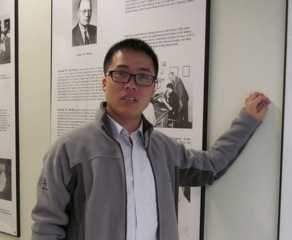phone (617) 324 6106
email gmluo@mit.edu
Massachusetts Institute of Technology
E25-608, 45 Carleton Street
Cambridge, MA 02139
USA

Bio
2014-present: Postdoctoral Associate, MIT
2012-2013: Assistant Professor, China University of Geosciences
2006-2011: PhD., biogeochemistry, China University of Geosciences
2011.2-2011.8: Visiting student, MIT, supervised by Prof. Roger Summons
2008.10-2009.4: Visiting student, Penn State, supervised by Prof. Lee Kump
2002-2006: B.s., geology, China University of Geosciences
Research
My research focuses on the co-evolution of life and environment in Earth history. By using organic geochemical, stable isotope geochemical and elemental geochemical tools, I try to unravel the variation pattern of redox and chemical composition of marine and biotic composition during some critical intervals in Earth history, such as the Precambrian and P-Tr transition. During my postdoc, I will work on geochemical evidence for early life.
Select Publications
Luo, G.M., Algeo, T.J., Huang, J.H., Zhou, W.F., Wang, Y.B., Yang, H., Richoz, S., Xie, S.C., 2014. Vertical d13Corg gradients record changes in planktonic microbial community composition during the end-Permian mass extinction. Palaeogeography, Palaeoclimatology, Palaeoecology 396, 119-131.
Luo, G.M., Wang, Y.B., Grice, K., Kershaw, S., Algeo, T.J., Ruan, X.Y., Yang, H., Jia, C.L., Xie, S.C., 2013. Microbial-algal community changes during the latest Permian ecological crisis: Evidence from lipid biomarkers at Cili, South China. Global and Planetary change, 105: 36-51.
Luo, G.M., Xie, S.C., Liu, D., Algeo, T.J., 2013. Microbial influences on paleoenvironmental changes during the Permian-Triassic boundary crisis. Science China Earth Science, in press.
Luo, G.M., Wang, Y.B., Algeo, T.J., Kump, L.R., Bai, X., Yang, H., Yao, L., Xie, S.C., 2011. Enhanced nitrogen fixation in the immediate aftermath of the latest Permian marine mass extinction. Geology, 39: 647-650;
Kump, L.R., Junium, C., Arthur, M.A., Brasier, A.T., Fallick, A.E., Melezhik, V.A., Lepland, A., Črne, A.E., Luo, G.M., 2011. Isotopic evidence for massive oxidation of organic matter following the great oxidation event. Science, 334, 1694-1696.
Luo, G.M., Wang, Y.B., Yang, H., Algeo, T., Kump, L., Huang, J.H., Xie, S.C., 2011. Stepwise and large-magnitude negative shift in 13Ccarb preceded the main marine mass extinction of the Permian-Triassic crisis interval. Palaeogeography, Palaeoclimatology, Palaeoecology 299, 70-82.
Luo, G.M., Kump, L., Wang, Y.B., Tong, J.N., Arthur, M., Yang, H., Huang, J.H, Yin, H.F., Xie, S.C., 2010. Isotopic evidence for an anomalously low oceanic sulphate concentration during end-Permian mass extinction. Earth and Planetary Science Letter 300, 101-111;
Luo, G.M., Huang, J.H., Xie, S.C., Wignall, P.B., Tang, X.Y., Huang, X.Y., Yin, H.F., 2010. Relationships between carbon isotope evolution and variation of microbes during the Permian-Triassic transition at Meishan section, South China. International Journal of Earth Science99: 775-784;
Xie, S.C., Pancost, R.D., Wang, Y.B., Yang, H., Wignall, P.B., Luo, G.M., Jia, C.L., Chen, L., 2010. Cyanobacterial blooms tied to volcanism during the 5-million-year Permo-Triassic biotic crisis. Geology, 38: 447-450.


